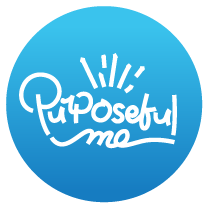
Unleashing Your Inner Creativity: Embracing The Art Of Possibility – Part II
In last week’s post, I wrote about how we are all designed to be creative beings although creativity looks different for each of us. There were tips to help us unleash our creativity but I left out some thoughts to keep my post short. I was asked by a friend for the rest of the piece because they felt like there was more to cover, so here it is.
In unleashing our inner creativity, there are some precautions that we must take to avoid the pitfalls that can be in our paths. We have to bear in mind some do’s and don’t as we embrace the art of possibilities for all of us. Creativity is a powerful force, but there are pitfalls that can block its expression.
Here are a few thoughts on this:
Desire for Perfectionism
Many of us are wired to get things just right, but just right for some means perfection so they keep tinkering instead of releasing their work for others to enjoy. Striving for perfection can paralyze your creativity. Accept that imperfection is part of the creative journey.

I love watching children draw; some will draw their first line and immediately use an eraser to rub it off because it didn’t look right, and this process can repeat itself causing them to stall or give up in frustration. On the flip side, other children will simply use their pencil to start another line from where the first line went wrong and continue their picture. You can see them constantly looking at how to incorporate the failed line into their design by shading them in or finally going back to erase the excess out after their vision is fully on paper. This second group of children don’t allow themselves to get stuck by their first ‘imperfection’.
Desire for perfection can lengthen the process of creativity and it can delay our internal sign off and release of the finished product. We are often our own worst critics so when others see an amazing piece, we keep looking for what we believe to still be missing from it. This is the reason some artists die before their best works are ever seen.
The dreaded ‘Self-Doubt’
Everyone suffers from self-doubt and those who appear never to have an issue with this appear that way because they have learnt to master the dreaded self-doubt and have tips and hints that help them address any vulnerable moments of self-doubt.
Most confident speakers and comedians that we admire have their processes before they go on stage, artists prepare themselves mentally before their work is unveiled to the critics. This is because everyone of us will feel vulnerable and have a panic moment before the light is shone on something that is so personal to us.
Take steps to master self-doubt, remind yourself about your uniqueness and appreciate your own unique view which is neither wrong nor right; it’s simply yours and deserves a place as such.
The intrusive ‘Negative self-talk’

If self-doubt is one side of a coin, negative self-talk would be the other side as one goes with the other. Your self-doubt will make you say negative things to yourself which will crush your creativity.
Even though I cook in a professional capacity and cater for events, I still feel uncomfortable when I am referred to as a chef due to the fact that I haven’t been to a culinary institute and I have a job that I consider to be my main job. This is because of my own interpretation of that title and the fact that cooking is a passion and hobby in my mind and not a job.
In those moments I remind myself of self-taught chefs, my own abilities and my life-long study of food using the same resources used in the culinary institutes. I reflect on the feedbacks from my clients and clients that I have worked with for years and this helps me to quiet the negative self-talk.
To overcome negative self-talk, believe in your abilities and trust your instincts. Continuously develop yourself and work towards mastering your craft.
The relentless ‘Overthinking’
Analysis paralysis can stifle creativity. Any of us can over-complicate an idea, picture, menu or dish design. It’s important to know when to stop over-thinking, over-tinkering or over-complicating an idea. Many times, less can truly be more and the simpler solutions can be the better ones.
Sometimes, it’s best to go with your gut and trust your initial ideas. I’ve seen designs stripped back to the starting point through a ‘pause and pivot’ process. The best thing to do in some scenarios is simply to stop and start with a blank slate with an uncluttered but creative mind.

The unnecessary ‘Comparison’
We are all prone to seeing others in better lights than we see ourselves and we overlook their mistakes more easily than we would ours. We see their design flaws but look at the bigger picture and compliment them.
On the flip side, when it comes to our work, we get overcritical and only compare ourselves to those we deem to be perfect and start to feel sub-par to them. Comparing yourself to others can be demotivating. Focus on your unique creative journey.
The pointless ‘fear of Failure’
None of us is immune to the fear of failure; we all have to conquer this fear as it can and will deter experimentation if we allow it to. Embrace failure as a stepping stone to success. If you fail, you get to try again. There is unlimited creativity so there will be more for your re-do or re-take. As Maya Angelou said, “You can’t use up creativity. The more you use, the more you have.”
The beautiful thing about creativity is that it’s a limitless resource. The more you use it, the more it grows. As you embrace the art of possibility, remember that creativity isn’t a finite well to be tapped dry; it’s a wellspring that deepens with use.
In the concluding part next week, I will share a roadmap to unlocking your creative potential. Thanks for reading and sharing my post with others.

